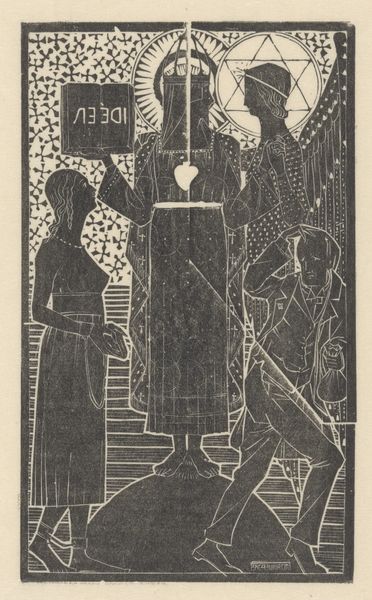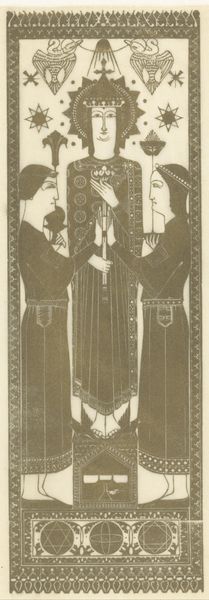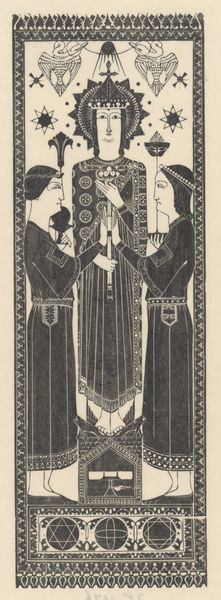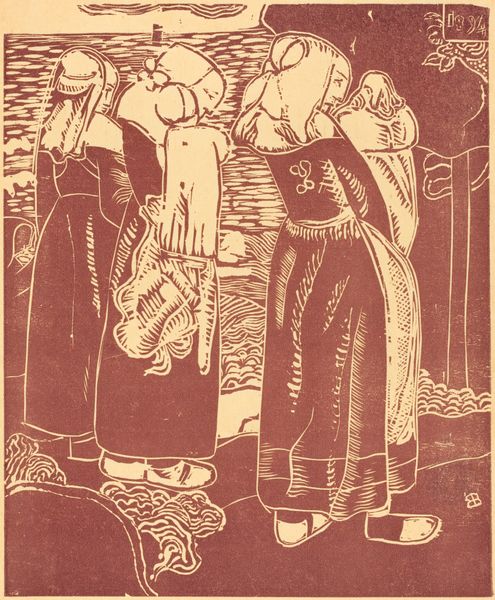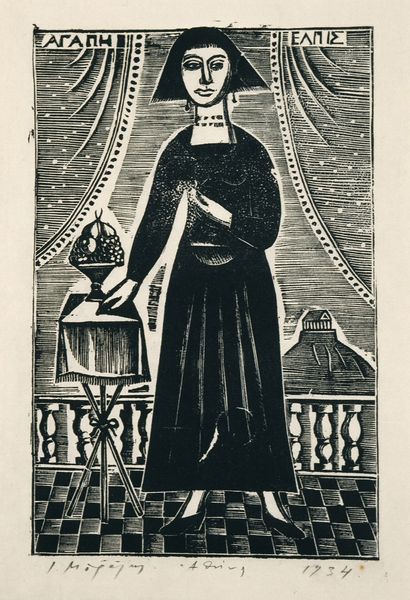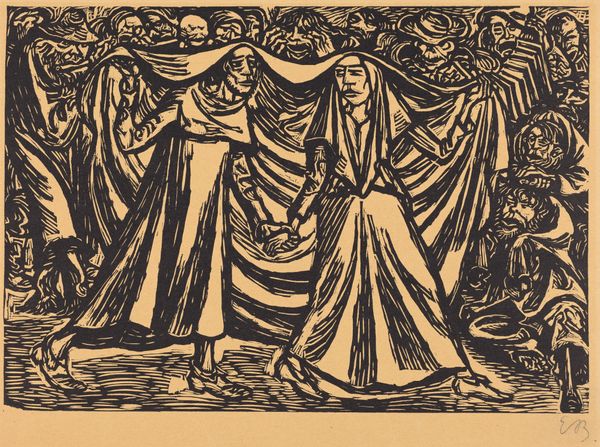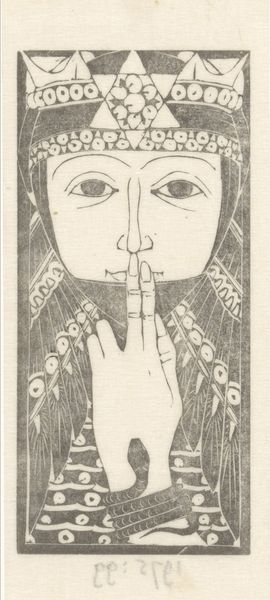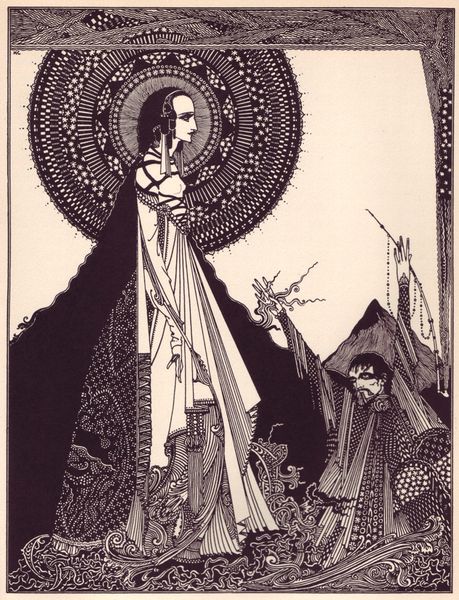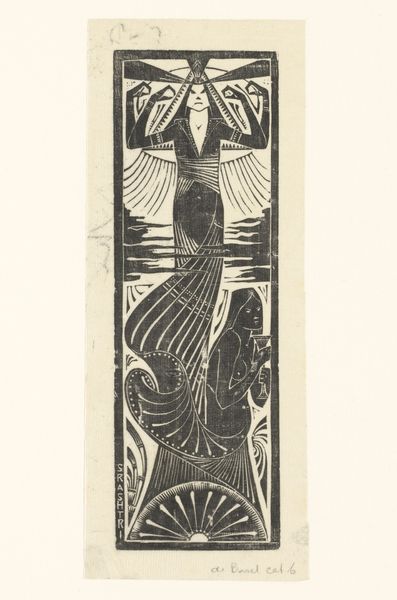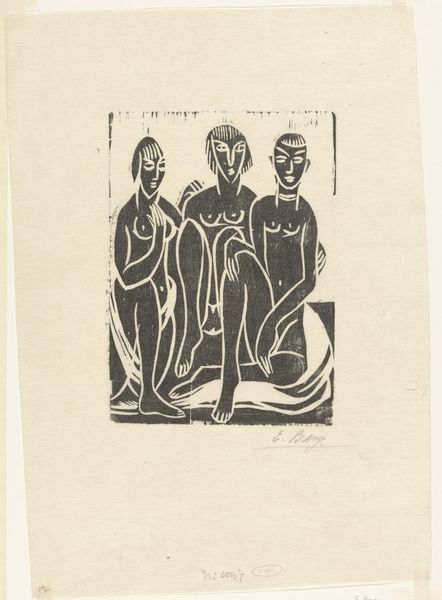
Dimensions: height 575 mm, width 400 mm
Copyright: Rijks Museum: Open Domain
Editor: So, this woodcut print, titled *Een gesprek* or *A Conversation*, was created in 1921 by Johannes Frederik Engelbert ten Klooster. The use of only black and white really strikes me. What do you see in this piece, with your perspective on symbolism? Curator: I am struck by the solemnity of the three figures, standing almost ethereally against the mountainous backdrop. There’s a dreamlike quality. Notice how each figure carries a specific posture, hands clasped or holding an object – each a signifier. Does that say anything to you about how the artist approached these figures? Editor: Yes, it’s almost as if each figure represents a different aspect of a single concept, perhaps stages of grief or different ways of knowing. Curator: Exactly. Their clothing, geometric patterns contrasting with the organic lines of the landscape, suggests a dialogue between the man-made and the natural world, the material and spiritual. The birds could indicate freedom, and the plantlife at the base, nature’s grounding force. It seems significant given the Expressionist element of simplifying the figures and making them idealized archetypes. Editor: That makes sense. It feels less like a literal conversation and more like an exploration of inner thoughts externalized. It makes me wonder if the bare feet and closed eyes means the artist thinks they are spiritually awakened. Curator: The bare feet indeed. Rooted in the earth but reaching for something higher. The inward gaze is indicative of both acceptance and hope. Perhaps ten Klooster, working shortly after WWI, sought to express his society’s aspirations through archetypal memory. Editor: I see it so differently now, understanding the power of these repeated motifs! Thanks! Curator: My pleasure!
Comments
No comments
Be the first to comment and join the conversation on the ultimate creative platform.
